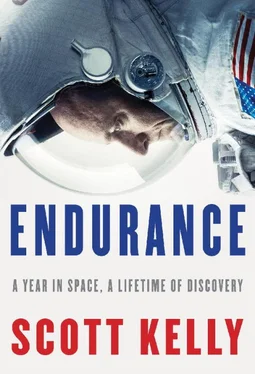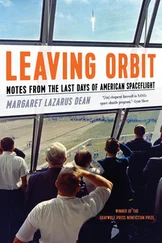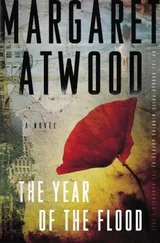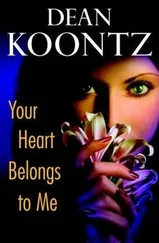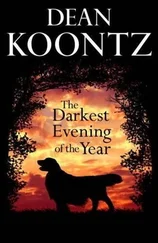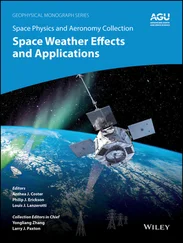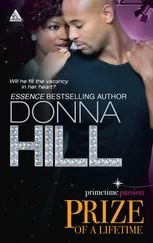Seventeen years earlier, the Challenger commission had blamed that disaster on a creeping complacency about safety in the shuttle program. The culture at NASA had changed a great deal as a result, but now it seemed maybe that complacency had crept back in again. It’s not as though no one had raised the alarm about this issue: Apollo veteran John Young, commander of the first space shuttle mission, and conscience of the Astronaut Office, was always standing up in our Monday morning meetings, trying to convince people of the danger posed by the foam. I remember him saying distinctly, “We have to do something about this or a crew is going to die.”
I thought about the people I knew who had been on Columbia. I had known Dave Brown longer than most of my classmates because he had been at Pax River when I was. He had a great gap-toothed smile and a casual attitude that belied his enormous accomplishments—he had been admitted to an elite program that allowed flight surgeons to become Navy pilots. He had helped Mark prepare for his NASA interview and then helped me when I was called. That was the type of guy he was.
Laurel Clark was a Navy doctor before she became an astronaut, and our families had become close soon after we moved to Houston. She had a son, Iain, the same age as Samantha. Laurel would often pick up Samantha and take her along with Iain to the zoo on Saturdays. Laurel and her husband, Jon, were part of an inner circle that met often for social evenings at Mark’s house. Laurel liked wine, and so did the rest of our group, and we spent many great evenings together. We gave her the nickname “Floral” for her flowery fashion sense and her love of gardening. She had a carpet of violets at her house, and in the weeks and months after the accident everyone in our class would be given a small pot full of them to care for and remember her by. Most of us kept them on the windowsills in our offices, and Lisa Nowak would often come by and take care of our violets for us if they weren’t doing well.
Willie McCool, a fellow Navy pilot, and I had crossed paths briefly at Pax River before we were both selected as astronauts. He had been finishing up his tour as a test pilot when I was just starting mine. I remember the first time I saw his name on a list of the new class and thought it had to be the best astronaut name ever. Willie was infectiously positive, extremely smart, and genuinely caring about the people around him.
I didn’t know the other crew members nearly as well because they hadn’t been in my class. Rick Husband, the commander, a dedicated family man and Air Force pilot; Kalpana Chawla, the first Indian American woman in space and an aerospace engineer; Mike Anderson, an Air Force pilot with a ready smile; and Ilan Ramon, an Israeli fighter pilot who had been chosen to represent his country on this shuttle mission. Ilan was considered a national hero, the youngest pilot to have taken part in a risky air strike against an Iraqi nuclear reactor in 1981. He subsequently became one of Israel’s first F-16 pilots. The crew left behind a total of twelve children.
In my experience, when colleagues have died in accidents, we find ourselves reflecting on what great people the deceased were. Still, it was a special blow to lose a group of seven people who were all so warm, generous, and kind. It was as though we had lost the seven most respected and well liked of all our colleagues.
That day, my brother and I decided on our own to get some astronauts up to the area where the debris was falling. This was a bit ballsy of us, as we weren’t very senior in the Astronaut Office. We called George Abbey, now the former director of the Johnson Space Center, who continued to hold a great deal of sway in Houston. He recommended we call the Harris County constable, who got us in touch with the Coast Guard at Ellington Field. Mark and one of our astronaut colleagues got into a helicopter and were soon searching through the East Texas terrain for debris and the bodies of our friends and colleagues.
I stayed back with a large group working on a recovery plan for the astronauts’ remains and the orbiter debris, so we could reconstruct what had happened. After the Challenger disaster, pieces of debris recovered from the ocean floor provided physical proof of what had gone wrong, and, as with Challenger, we would gather pieces of the shuttle in a hangar at the Kennedy Space Center in Florida. When I got home that evening, Leslie and I went to my brother’s house to be with Jon Clark, Laurel’s husband, and Iain, now eight. They had just returned from Florida after the horribly long, futile wait at the landing facility. It was heartbreaking to see them and try to comfort them. Our classmate Julie Payette was temporarily staying with Mark and his family at the time, and she and I tried to impress upon Jon and Iain that the crew’s deaths were likely painless. We had no way of knowing this for sure, of course, but we wanted to believe it for ourselves as much as for Laurel’s grieving family. Later we would learn the crew probably had less than ten seconds of useful consciousness after the orbiter’s pressure hull was breached. None of them had time to lower their helmet visors, so we knew depressurization must have taken place very quickly. After one of the control panels was recovered from a field, investigators deduced that Willie had tried to restart two of the auxiliary power units, so we knew they must have had at least a sense that something was going wrong.
The next day, I headed north in my car and helped out with the search for debris and human remains. I was teamed up with an FBI evidence-response team that had been involved in identifying remains at the World Trade Center. They worked with dogs that could distinguish human from animal remains. Standing in a wooded area where debris had fallen, I thought about other airplane crashes that had killed my friends and colleagues. The charred smell, the search for pieces of smashed aircraft, and the burned remainder of an elegant flying machine—all of it reminded me of the opening pages of The Right Stuff. In all my years of flying and scores of colleagues lost, this was my first time as part of the accident recovery team, like the pilots in Tom Wolfe’s book. I don’t think Tom ever saw such wreckage himself, but I could now confirm that he described it all perfectly.
Word had spread at JSC about the search, and a large number of NASA workers volunteered to help. But the area where debris had fallen covered so many thousands of square miles, from central Texas to Louisiana, that we needed more people. Emergency workers from all over the country, many of them Native American firefighters from the western states, descended on the area and quickly set up tent cities, complete with their own supplies. I was impressed by their dedication, organization, and skill at walking detailed search patterns in the thick woods of East Texas. They recovered thousands of fragments of Columbia, and every piece would help us figure out what had gone wrong.
At the Kennedy Space Center, workers started to assemble parts on an outline of the shuttle’s silhouette painted on the concrete floor of a hangar. The first time I walked into that space to see the debris laid out, I was struck by the sight. The fact that a spacecraft can hit the atmosphere and burn up, yet the pieces can still be identified and reassembled this way, was eerie. I had been assigned to the next flight of Columbia, and it was strange to see the orbiter that was supposed to have been mine to command mangled and burned on the concrete floor. I later learned that it had been a toss-up between Willie McCool and me as to who would serve as pilot of my Hubble Space Telescope repair mission and who would fly the ill-fated mission of Columbia.
Читать дальше
